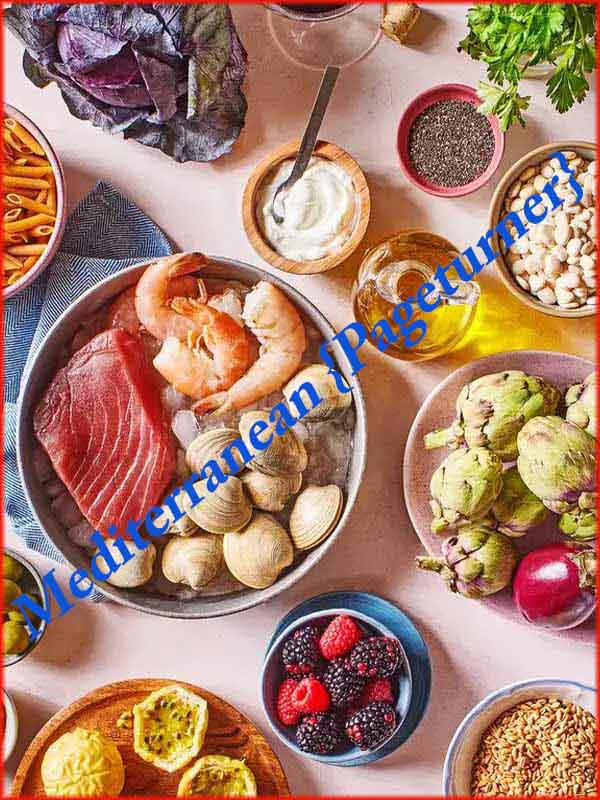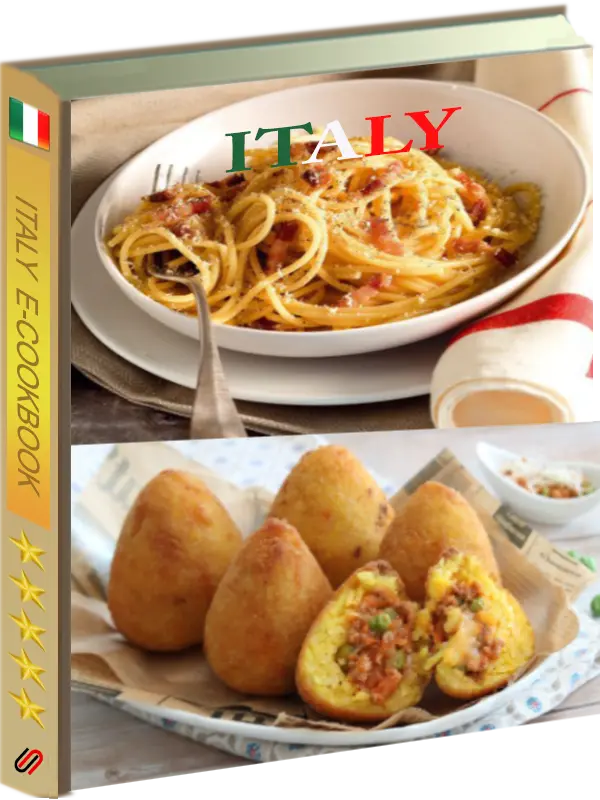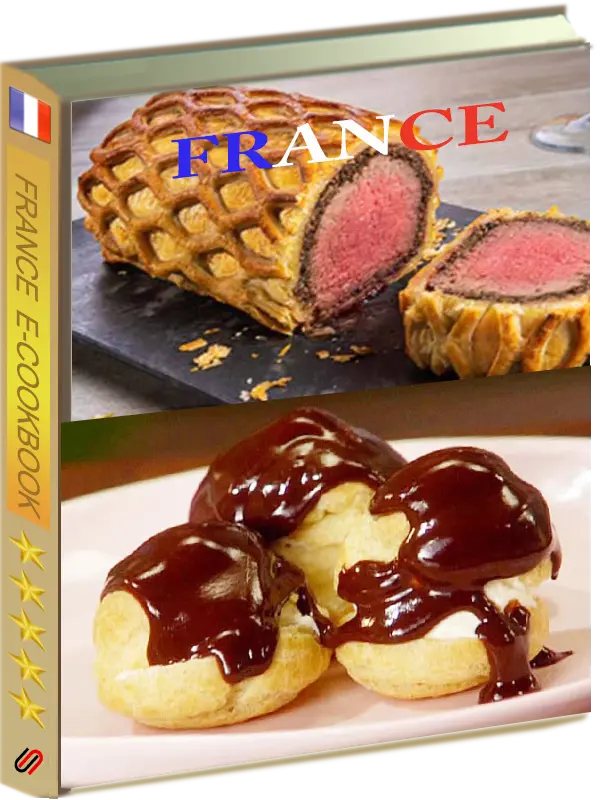Aranya Black Pepper
Source: Pronounce It Button $12 Tasting Notes: Fig ∙ Citrus ∙ Jam ∙ Nutmeg We'd describe our beloved black pepper like a beautiful red wine - it's complex, layered, and deserves to be savored. Sometimes it feels like we've created a swarm of Aranya hoarders and evangelists, which makes sense because it truly makes every meal feel like a special occasion. Types of peppercorns Different types of peppercorns—green, black, and white—all start the same way, as a drupe, growing in clusters on a flowering vine of the plant Piper nigrum. That fruit, depending on how ripe it is when it’s harvested and how it’s processed, is what becomes the three types you’re most likely to come across in recipes. Green peppercorns Green peppercorns are harvested before they’re fully ripe, then either freeze-dried to a crushable texture or brined, which renders them almost caper-like. Brighter, milder, and more vegetal than black pepper, it is commonly used in Thai curries and gives a classic French steak au poivre its briny bite. Use green pepper in recipes like this Porterhouse With Summer Au Poivre Sauce, where pickled green peppercorns give a softer punch than black and bring chewy pops of texture. Black peppercorns The ubiquitous black peppercorn is also picked before it has reached full maturity. Unlike its green counterpart, it’s then blanched in hot water before being dried, which gives it that wrinkly, crackly skin. Despite their name, black peppercorns can range in color from silvery gray to chocolate brown to deep maroon. The flavor of the black peppercorns in your grinder has a lot to do with where they were grown and harvested, much in the same way that Chardonnay grapes from two different regions will yield distinctly different wines. And like wine, the distributors of high-quality pepper will often proudly tout its origins. Indian pepper from Malabar and Tellicherry, where it has been cultivated for millenia, tends to be sweet and fruity, with bright citrusy notes. Sarawak peppercorns from Malaysia lean more earthy and mild. Cambodian Kampot peppercorns can have a resiny, more astringent aroma like eucalyptus or menthol. -------------------- https://paraphrasing-tool.com/ We'd portray our darling dark pepper like a lovely red wine - it's intricate, layered, and should be enjoyed. Now and then it seems like we've made a multitude of Aranya hoarders and evangelists, which checks out in light of the fact that it really causes each dinner to feel like an extraordinary event. Peppercorns of various kinds The green, black, and white varieties of peppercorn all begin as drupes on a Piper nigrum flowering vine in clusters. That organic product, contingent upon how ready it is the point at which it's collected and the way that it's handled, turns into the three kinds you're probably going to go over in recipes. Green peppercorns Green peppercorns are reaped before they're completely ready, then, at that point, either freeze-dried to a crushable surface or tenderized, which renders them nearly escapade like. More brilliant, milder, and more vegetal than dark pepper, it is usually utilized in Thai curries and gives an exemplary French steak au poivre its briny nibble. Utilize green pepper in recipes like this Porterhouse With Summer Au Poivre Sauce, where cured green peppercorns give a gentler punch than dark and bring chewy pops of surface. Dark peppercorns The universal dark peppercorn is additionally picked before it has arrived at complete development. Dissimilar to its green partner, it's then, at that point, whitened in steaming hot water prior to being dried, which gives it that wrinkly, crackly skin. Notwithstanding their name, dark peppercorns can go in variety from shimmering dim to chocolate brown to profound maroon. The kind of the dark peppercorns in your processor has a great deal to do with where they were developed and reaped, much similarly that Chardonnay grapes from two unique districts will yield particularly various wines. Also, similar to wine, the merchants of great pepper will frequently gladly promote its starting points. Indian pepper from Malabar and Tellicherry, where it has been developed for millenia, will in general be sweet and fruity, with brilliant citrusy notes. Sarawak peppercorns from Malaysia incline more hearty and gentle. The aroma of Cambodian Kampot peppercorns can be more astringent and resinous than that of menthol or eucalyptus. --------------------- Where would we be without salt? James Beard Salt is what makes things taste bad when it is not in them. Irena Chalmer ------------- https://www.spiceography.com/list-of-herbs-and-spices/ asafoetida powder garam masala ras el hanout (le mélange pour couscous) ou des épices spéciales tajine. ras el hanout (le mélange pour couscous) ou des épices spéciales tajine. In Arabic Ras el Hanout literally means “the best of the grocery store”. This mixture of spices, in fact, represents one of the maximum oriental delicacies. Ras el Hanout is a spotlight in Moroccan and North African cuisines that could add a distinctive flavor to savory and sweet dishes. Ras el hanout was born in ancient times, even before the discovery of the Americas and when the spice trade was still ending in Morocco, the terminus of the African west. Couscous Moroccan cuisine Harissa Tajine Za'atar What are Chana Masala Spices? Garam masala adds warmth and richness to your meals with its amazing flavors. Experiment with different recipes and enjoy this spice mix! https://www.msn.com/en-ca/foodanddrink/foodnews/20-must-have-spices-and-what-to-do-with-them/ss-AA1k6Wpc?ocid=msedgntp&pc=LCTS&cvid=bd58b70a20cf4495b50ebdf928bb0965&ei=46 Chana Masala actually varies greatly in India depending on the area, and even down to the specific household. Each blend is unique. And that is what makes this fun! Here is a favorite blend which can be adapted to your own tastes. Cumin seeds (whole), garam masala, ground cumin, ground coriander, fennel seeds, paprika (or chili powder), dried fenugreek leaves, ground turmeric. Ajwain? Like coriander, cumin, and fennel, ajwain belongs to the Apiaceae (or Umbelliferae) family of plants. The shrub's leaves are feather-like and the plant's fruit—often referred to as seeds—are pale khaki-colored, ridged in texture, and oval-shaped. Ajwain has been used since ancient times in cooking and for medicinal purposes and is part of Indian, Middle Eastern, and African cooking What Is Cardamom? Cardamom is a spice made from the seed pods of various plants in the ginger family. Cardamom pods are spindle-shaped and have a triangular cross-section. The pods contain a number of seeds, but the entire cardamom pod can be used whole or ground. The seeds are small and black, while the pods differ in color and size by species. Varieties of Cardamom There are two main types of cardamom: black cardamom and green cardamom, and there is also white cardamom which is a bleached version of green cardamom. Green cardamom is the kind found most often in Nordic and Middle Eastern cuisine, while recipes in India and Asia will often specify whether green or black cardamom is used. Green cardamom (Elettaria cardamomom) is known as true cardamom. This is the most common variety you will see sold in the spice aisle of the supermarket. It is the top choice for sweet dishes but also works well in savory dishes. The bleached version, white cardamom, has less flavor. It is grown in tropical areas including India, Malaysia, and Costa Rica. Black cardamom (Amomum subulatum) has larger pods that are dark brown. It has a smoky element that makes it more appropriate for savory dishes, but it is used in sweet dishes as well in southern India. It is grown in the eastern Himalayas. Cardamom is found in Indian cooking as well as Middle Eastern cuisine. In Indian recipes, whole cardamom pods are used in preparing basmati rice and various curries. In Middle Eastern recipes, ground cardamom spices certain desserts. Nigella Seed? Nigella seed comes from the seeds of the flowering plant Nigella sativa, which is found throughout Turkey, Syria, and parts of Iraq. Nigella is sometimes referred to by other names, such as black cumin, black onion seed, and black sesame seed, which can lead to some confusion, as nigella is not related to any of these. Rather, it's a member of the Ranunculaceae family, which also includes flowers such as the buttercup and delphinium. What Does It Taste Like? Nigella seeds have a strong aroma and a flavor profile that has notes of onion, oregano, and black pepper. The perception of these flavors can differ from person to person, and some may taste a slightly nutty flavor as well. These characteristics contribute to why savory dishes make a great pair with these savory seeds. Cooking With Nigella Seed Nigella seeds are found frequently in Indian, Middle Eastern, and North African cuisines. This means you can find these seeds in curries and lentil dishes alike. Nigella seeds also pair well with root vegetable dishes, as well as squashes such as spiced butternut squash. Many Southern Asia meals can be found with Nigella sativa garnished on top or incorporated into their stir-fry. It's also used in making pilafs, curries, vegetable dishes, and pickles. A popular Bengal spice called panch phoron also includes nigella seeds along with other spices like fenugreek, mustard seed, fennel seed, and cumin seeds. A common use of nigella is in bread and pastries. Often in India, they mix nigella seeds into their traditional naan bread. There are many other unique ways to use nigella seeds; for instance, garnish on a salad for an extra crunch. One way to start using nigella seeds is to incorporate them into pancakes or scones. You can also use them much as you would use sesame seeds, like if you were making your own homemade crackers. They're also great sprinkled on eggs, in salad dressings, and since they pair well with dairy, they can be sprinkled on yogurt to add some flavor and crunch. One of the best ways to use nigella seeds is to sprinkle them on homemade breads or bagels before you bake them.
Source: Pronounce It Button $12 Tasting Notes: Fig ∙ Citrus ∙ Jam ∙ Nutmeg We'd describe our beloved black pepper like a beautiful red wine - it's complex, layered, and deserves to be savored. Sometimes it feels like we've created a swarm of Aranya hoarders and evangelists, which makes sense because it truly makes every meal feel like a special occasion. Types of peppercorns Different types of peppercorns—green, black, and white—all start the same way, as a drupe, growing in clusters on a flowering vine of the plant Piper nigrum. That fruit, depending on how ripe it is when it’s harvested and how it’s processed, is what becomes the three types you’re most likely to come across in recipes. Green peppercorns Green peppercorns are harvested before they’re fully ripe, then either freeze-dried to a crushable texture or brined, which renders them almost caper-like. Brighter, milder, and more vegetal than black pepper, it is commonly used in Thai curries and gives a classic French steak au poivre its briny bite. Use green pepper in recipes like this Porterhouse With Summer Au Poivre Sauce, where pickled green peppercorns give a softer punch than black and bring chewy pops of texture. Black peppercorns The ubiquitous black peppercorn is also picked before it has reached full maturity. Unlike its green counterpart, it’s then blanched in hot water before being dried, which gives it that wrinkly, crackly skin. Despite their name, black peppercorns can range in color from silvery gray to chocolate brown to deep maroon. The flavor of the black peppercorns in your grinder has a lot to do with where they were grown and harvested, much in the same way that Chardonnay grapes from two different regions will yield distinctly different wines. And like wine, the distributors of high-quality pepper will often proudly tout its origins. Indian pepper from Malabar and Tellicherry, where it has been cultivated for millenia, tends to be sweet and fruity, with bright citrusy notes. Sarawak peppercorns from Malaysia lean more earthy and mild. Cambodian Kampot peppercorns can have a resiny, more astringent aroma like eucalyptus or menthol. -------------------- https://paraphrasing-tool.com/ We'd portray our darling dark pepper like a lovely red wine - it's intricate, layered, and should be enjoyed. Now and then it seems like we've made a multitude of Aranya hoarders and evangelists, which checks out in light of the fact that it really causes each dinner to feel like an extraordinary event. Peppercorns of various kinds The green, black, and white varieties of peppercorn all begin as drupes on a Piper nigrum flowering vine in clusters. That organic product, contingent upon how ready it is the point at which it's collected and the way that it's handled, turns into the three kinds you're probably going to go over in recipes. Green peppercorns Green peppercorns are reaped before they're completely ready, then, at that point, either freeze-dried to a crushable surface or tenderized, which renders them nearly escapade like. More brilliant, milder, and more vegetal than dark pepper, it is usually utilized in Thai curries and gives an exemplary French steak au poivre its briny nibble. Utilize green pepper in recipes like this Porterhouse With Summer Au Poivre Sauce, where cured green peppercorns give a gentler punch than dark and bring chewy pops of surface. Dark peppercorns The universal dark peppercorn is additionally picked before it has arrived at complete development. Dissimilar to its green partner, it's then, at that point, whitened in steaming hot water prior to being dried, which gives it that wrinkly, crackly skin. Notwithstanding their name, dark peppercorns can go in variety from shimmering dim to chocolate brown to profound maroon. The kind of the dark peppercorns in your processor has a great deal to do with where they were developed and reaped, much similarly that Chardonnay grapes from two unique districts will yield particularly various wines. Also, similar to wine, the merchants of great pepper will frequently gladly promote its starting points. Indian pepper from Malabar and Tellicherry, where it has been developed for millenia, will in general be sweet and fruity, with brilliant citrusy notes. Sarawak peppercorns from Malaysia incline more hearty and gentle. The aroma of Cambodian Kampot peppercorns can be more astringent and resinous than that of menthol or eucalyptus. --------------------- Where would we be without salt? James Beard Salt is what makes things taste bad when it is not in them. Irena Chalmer ------------- https://www.spiceography.com/list-of-herbs-and-spices/ asafoetida powder garam masala ras el hanout (le mélange pour couscous) ou des épices spéciales tajine. ras el hanout (le mélange pour couscous) ou des épices spéciales tajine. In Arabic Ras el Hanout literally means “the best of the grocery store”. This mixture of spices, in fact, represents one of the maximum oriental delicacies. Ras el Hanout is a spotlight in Moroccan and North African cuisines that could add a distinctive flavor to savory and sweet dishes. Ras el hanout was born in ancient times, even before the discovery of the Americas and when the spice trade was still ending in Morocco, the terminus of the African west. Couscous Moroccan cuisine Harissa Tajine Za'atar What are Chana Masala Spices? Garam masala adds warmth and richness to your meals with its amazing flavors. Experiment with different recipes and enjoy this spice mix! https://www.msn.com/en-ca/foodanddrink/foodnews/20-must-have-spices-and-what-to-do-with-them/ss-AA1k6Wpc?ocid=msedgntp&pc=LCTS&cvid=bd58b70a20cf4495b50ebdf928bb0965&ei=46 Chana Masala actually varies greatly in India depending on the area, and even down to the specific household. Each blend is unique. And that is what makes this fun! Here is a favorite blend which can be adapted to your own tastes. Cumin seeds (whole), garam masala, ground cumin, ground coriander, fennel seeds, paprika (or chili powder), dried fenugreek leaves, ground turmeric. Ajwain? Like coriander, cumin, and fennel, ajwain belongs to the Apiaceae (or Umbelliferae) family of plants. The shrub's leaves are feather-like and the plant's fruit—often referred to as seeds—are pale khaki-colored, ridged in texture, and oval-shaped. Ajwain has been used since ancient times in cooking and for medicinal purposes and is part of Indian, Middle Eastern, and African cooking What Is Cardamom? Cardamom is a spice made from the seed pods of various plants in the ginger family. Cardamom pods are spindle-shaped and have a triangular cross-section. The pods contain a number of seeds, but the entire cardamom pod can be used whole or ground. The seeds are small and black, while the pods differ in color and size by species. Varieties of Cardamom There are two main types of cardamom: black cardamom and green cardamom, and there is also white cardamom which is a bleached version of green cardamom. Green cardamom is the kind found most often in Nordic and Middle Eastern cuisine, while recipes in India and Asia will often specify whether green or black cardamom is used. Green cardamom (Elettaria cardamomom) is known as true cardamom. This is the most common variety you will see sold in the spice aisle of the supermarket. It is the top choice for sweet dishes but also works well in savory dishes. The bleached version, white cardamom, has less flavor. It is grown in tropical areas including India, Malaysia, and Costa Rica. Black cardamom (Amomum subulatum) has larger pods that are dark brown. It has a smoky element that makes it more appropriate for savory dishes, but it is used in sweet dishes as well in southern India. It is grown in the eastern Himalayas. Cardamom is found in Indian cooking as well as Middle Eastern cuisine. In Indian recipes, whole cardamom pods are used in preparing basmati rice and various curries. In Middle Eastern recipes, ground cardamom spices certain desserts. Nigella Seed? Nigella seed comes from the seeds of the flowering plant Nigella sativa, which is found throughout Turkey, Syria, and parts of Iraq. Nigella is sometimes referred to by other names, such as black cumin, black onion seed, and black sesame seed, which can lead to some confusion, as nigella is not related to any of these. Rather, it's a member of the Ranunculaceae family, which also includes flowers such as the buttercup and delphinium. What Does It Taste Like? Nigella seeds have a strong aroma and a flavor profile that has notes of onion, oregano, and black pepper. The perception of these flavors can differ from person to person, and some may taste a slightly nutty flavor as well. These characteristics contribute to why savory dishes make a great pair with these savory seeds. Cooking With Nigella Seed Nigella seeds are found frequently in Indian, Middle Eastern, and North African cuisines. This means you can find these seeds in curries and lentil dishes alike. Nigella seeds also pair well with root vegetable dishes, as well as squashes such as spiced butternut squash. Many Southern Asia meals can be found with Nigella sativa garnished on top or incorporated into their stir-fry. It's also used in making pilafs, curries, vegetable dishes, and pickles. A popular Bengal spice called panch phoron also includes nigella seeds along with other spices like fenugreek, mustard seed, fennel seed, and cumin seeds. A common use of nigella is in bread and pastries. Often in India, they mix nigella seeds into their traditional naan bread. There are many other unique ways to use nigella seeds; for instance, garnish on a salad for an extra crunch. One way to start using nigella seeds is to incorporate them into pancakes or scones. You can also use them much as you would use sesame seeds, like if you were making your own homemade crackers. They're also great sprinkled on eggs, in salad dressings, and since they pair well with dairy, they can be sprinkled on yogurt to add some flavor and crunch. One of the best ways to use nigella seeds is to sprinkle them on homemade breads or bagels before you bake them.
conversion of liquids
Weights
Temperatures
Measures of non liquid ingredients
Non-liquid ingredients in volume converted
|
|||||||
|---|---|---|---|---|---|---|---|
Ingredient |
1 cup |
3/4 cup |
2/3 cup |
1/2 cup |
1/3 cup |
1/4 cup |
2 tablespoons |
| All-purpose wheat flour | 120 g | 90 g | 80 g | 60 g | 40 g | 30 g | 15 g |
| All-purpose sifted wheat flour | 110 g | 80 g | 70 g | 55 g | 35 g | 27 g | 13 g |
| White sugar | 200 g | 150 g | 130 g | 100 g | 65 g | 50 g | 25 g |
| Powdered sugar/Icing sugar | 100 g | 75 g | 70 g | 50 g | 35 g | 25 g | 13 g |
| Brown sugar normally packed | 180 g | 135 g | 120 g | 90 g | 60 g | 45 g | 23 g |
| Corn flour | 160 g | 120 g | 100 g | 80 g | 50 g | 40 g | 20 g |
| Cornstarch | 120 g | 90 g | 80 g | 60 g | 40 g | 30 g | 15 g |
| Rice (not-cooked) | 190 g | 140 g | 125 g | 95 g | 65 g | 48 g | 24 g |
| Macaroni (uncooked) | 140 g | 100 g | 90 g | 70 g | 45 g | 35 g | 17 g |
| Couscous (uncooked) | 180 g | 135 g | 120 g | 90 g | 60 g | 45 g | 22 g |
| Quick oatmeal (uncooked) | 90 g | 65 g | 60 g | 45 g | 30 g | 22 g | 11 g |
| Table salt | 300 g | 230 g | 200 g | 150 g | 100 g | 75 g | 40 g |
| Butter / Margarine | 240 g | 180 g | 160 g | 120 g | 80 g | 60 g | 30 g |
| Shortening | 190 g | 140 g | 125 g | 95 g | 65 g | 48 g | 24 g |
| Fruits and légumes chopped | 150 g | 110 g | 100 g | 75 g | 50 g | 40 g | 20 g |
| chopped walnuts | 150 g | 110 g | 100 g | 75 g | 50 g | 40 g | 20 g |
| Nuts /ground almonds | 120 g | 90 g | 80 g | 60 g | 40 g | 30 g | 15 g |
| Fresh bread crumbs (not packed) | 60 g | 45 g | 40 g | 30 g | 20 g | 15 g | 8 g |
| Dry bread crumbs | 150 g | 110 g | 100 g | 75 g | 50 g | 40 g | 20 g |
| Parmesan grated | 90 g | 65 g | 60 g | 45 g | 30 g | 22 g | 11 g |
| Chocolate chips | 150 g | 110 g | 100 g | 75 g | 50 g | 38 g | 19 g |

Last page
curry
{Page-Turner} E-Cookbooks Library
on a world cooking journey.
0 Appetizers
0 Main dishes
Side dishes
0
curry recipes









